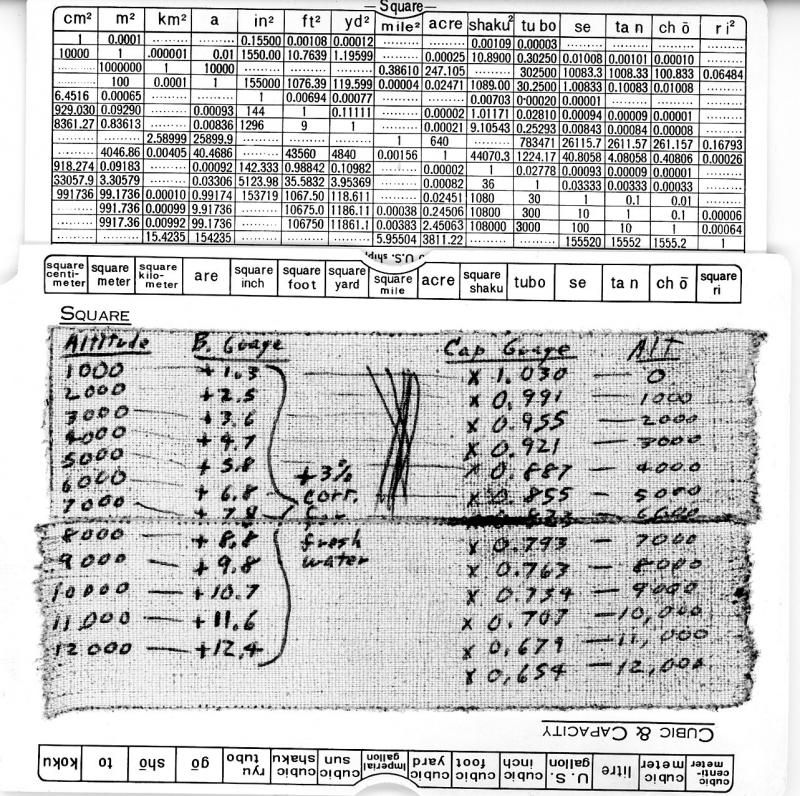My brothers, my son and I were playing around with my old slide rules, and I happened to pull out my circular slide rule. Brian, my son, who is a mechanical engineer, explained that we should still learn about slide rules when we learn algebra (I am doing some tutoring at a local high school), as they are built on scientific notation and the use of logarythms to do multiplication and division, as well as figuring sine/cosine, etc. Well, I happened to notice that in the 1970s I had put the following depth gauge corrections onto this slide rule, on tape that I put on the back of the Concise slide rule. I thought everyone would enjoy seeing it, as even with today's digital depth gauges unless we specific the altitude, and that we are diving fresh water, we may be slightly off in our determination of depth of the dive. These are shown for both Bourden tube gauges and for capillary tube gauges (tubes open to the water). A new, digital gauge probably functions much like a Bourden tube gauge. Here it is:

Oh, and I pulled up the printed table with corrections for squares. Use "1" for the reference, for instance 1 square foot and you can see the corrections for meters squared, yards squared, etc.
John

Oh, and I pulled up the printed table with corrections for squares. Use "1" for the reference, for instance 1 square foot and you can see the corrections for meters squared, yards squared, etc.
John




